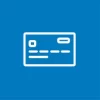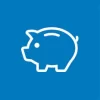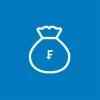Costs and interest rates at banks and insurance providers are expected to change notably.
Aside from general influences like the national and international economic situation, a number of additional factors like higher expenses, marketing strategies and customer behavior also play a role.
Over the long-term, the move towards increasing digitalization should lower costs. However, depending on the type of product in question, there are also counter-trends which drive prices up over the short-term or even in the long-term.
While some costs at insurers at banks remain largely unchanged over long periods of time, the interest yield rates applicable to savings and 3a retirement savings can change many times each year. Mortgage rates generally change daily.
Our individual assessments:
- Basic compulsory health insurance: On average, 2015 premiums for adults will be 4 percent higher than 2014 premiums.
- Supplementary health insurance and hospital insurance: 2015 may see small increases in premiums. Some insurers have already at least partially adjusted premiums in 2014. It is interesting to note that the cost of hospital insurance sank in 2014, compared to 2013 premiums.
- Travel insurance, legal expense insurance and pet insurance: A slight increase in average premiums is possible.
- Checking accounts: Average costs will go up. Increases have already been partially implemented. In an effort to make their banking package deals more attractive, banks are raising the costs of stand-alone services. The Swiss National Bank’s decision to adopt negative interest rates may also lead to higher fees.
- Credit cards: Average costs will climb. Fee increases have already been introduced, in part, during 2014. The decision to lower the interchange fee is another factor which may drive fees up, as issuers are likely to raise cardholder fees to maintain their profits.
- Savings accounts: Expect further cuts to yield rates due (in part) to the overall interest rate environment and the National Bank’s decision to adopt negative interest rates. Savings accounts are generally free of charge. For marketing reasons, it is unlikely that negative interest rates will be imposed on savings accounts.
- Bank packages (flat-rate offers): The cost of most newly-introduced bank packages have remained stable. It is likely that new bank packages will be introduced in 2015.
- Pillar 3a accounts and vested benefits accounts: Expect further decreases in yield rates due to the SNB decision and the overall interest rate environment.
- Medium term notes (bank bonds): Another drop in interest rates is to be expected based on the SNB decision and the interest environment as a whole. Possible exceptions are individual lenders which may offer attractive yield rates for interest-bearing products like medium-term notes as a means of refinancing.
- Mortgages: Interest rates for fixed-rate mortgages will remain at record lows.
- Personal loans: Costs will remain stable in the foreseeable future, although the possibility of individual interest rate hikes cannot be ruled out.
- Trading: Costs should remain stable in the foreseeable future. Individual, new flat-rate offers (such as those introduced by Bank Coop in July 2014) may appear on the market. Custody fees may go up. Over the long-term, international service providers will continue to put pressure on prices.
- Asset management and private banking: 2014 already brought price reductions and more will follow in 2015 (example: Credit Suisse in April, 2015). More flat-rate fees will be introduced. Over the long-term, fees will face increased competition from online wealth management service providers like True Wealth, Swissquote and others.
The overall verdict: Other than mortgages and wealth management, Swiss bank and insurance customers will have less money left over after covering costs in 2015, compared to 2014.
The moneyland.ch team

 Deal of the Day
Deal of the Day 








